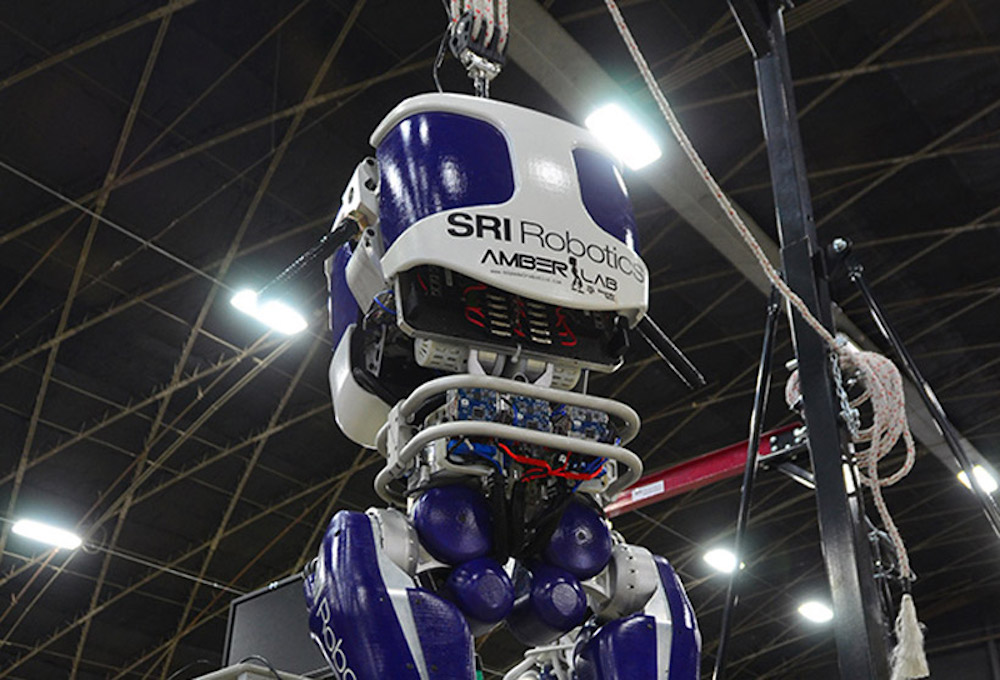
Robots to the Rescue
After the calamitous Fukushima accident, Defense Advanced Research Projects Agency (DARPA) sought to galvanize innovation concerning the design of disaster robots by creating the DARPA Robotics Challenge. The final competition concluded earlier this month and featured 25 teams competing in the spirit of progress in robotics and one day being able to create robots so efficient and dexterous that they can assist in dangerous disaster zones. Several teams, including the second place winner, developed copies of Google’s subsidiary Boston Dynamics’ ATLAS, the popular hydraulic-electric humanoid. Noting the high power requirements of ATLAS and the enormous limitations these energy constraints imposed, DARPA quickly began looking to create a solution. At this point, it’s safe to say that they have succeeded!
Meet DURUS
SRI International just revealed DURUS, a robot 20 to 30 times more efficient than ATLAS. Efficiency, in this case, is measured in cost of transport. DURUS displayed a cost of transport of 1.2 at the event, much better than ATLAS’ measure of 20 and closer to the average human’s efficiency of 0.2. In addition to various motor remodeling, the model achieved such impressive efficiency mostly by leveraging the walking style of humans, falling slightly forward and catching itself. This is in contrast to the typical robot gait that keeps it center of gravity balanced over its feet.
https://www.youtube.com/watch?v=HyqT9Bdamt8
IEEE Spectrum
Promising Future of Robotics
SRI plans to develop DURUS into a fully functioning, low cost, and high performance electric humanoid called PROXI. It will maintain a low cost of transport and be able to function for at least eight hours between charges. Since the DARPA funding concluded with the end of the challenge exhibition, SRI is looking towards putting robots on the market in three to five years. Rich Mahoney, SRI robotics program director, says of the coming humanoid’s groundbreaking ability, ”We don’t believe that there’s a platform [that exists right now] that has the kind of components, performance, and dynamic response that PROXI will have.”
This advanced robotics technology will soon be poised to save lives and complete necessary missions in danger zones and may eventually be available to consumers for the price of a small house. Robots on the market (hopefully and likely) will not look anything like the imagined dramatic sci-fi renditions.
Sources: IEEE Spectrum, DARPA Robotics Challenge
Image: IEEE Spectrum
Featured Video: IEEE Spectrum